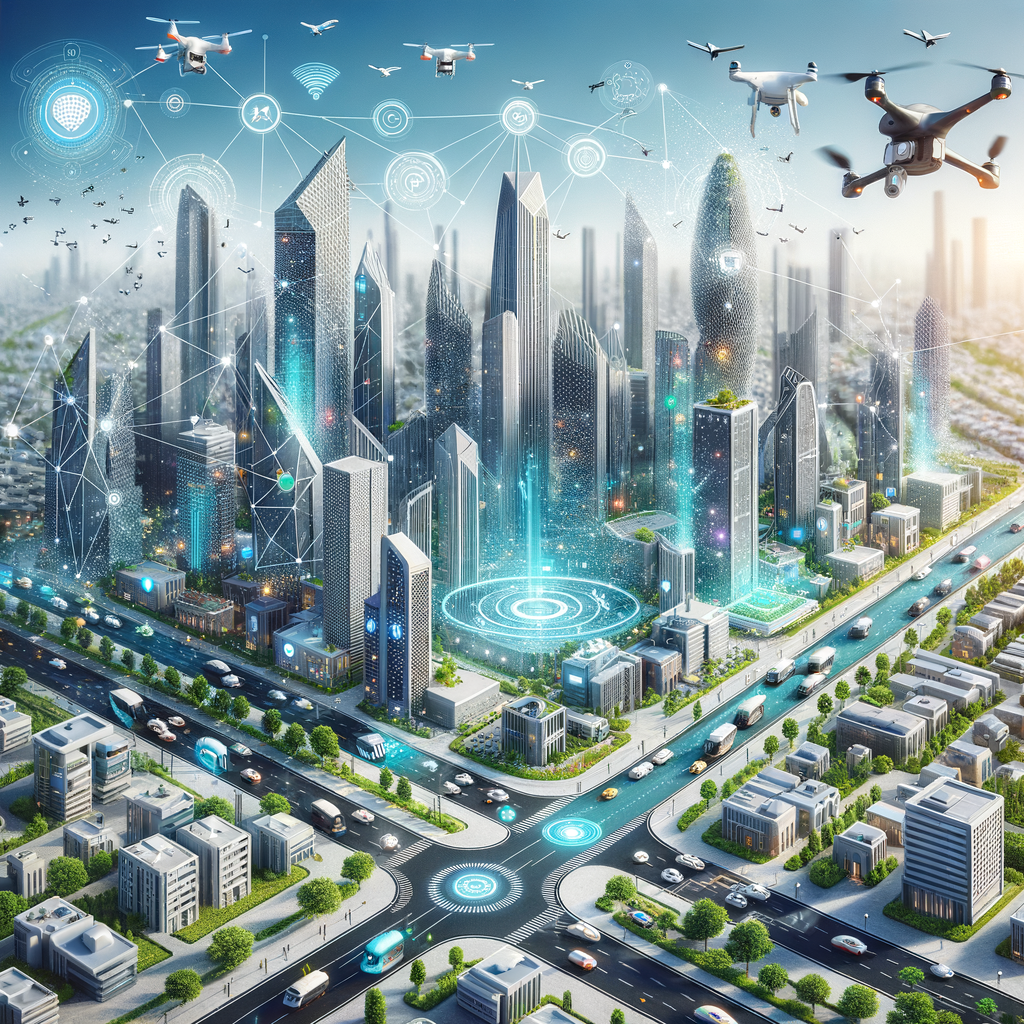Have you ever imagined living in a city that thinks for itself? Welcome to the era of AI-powered smart cities! A recent McKinsey report reveals that cities implementing AI solutions have seen up to 30% improvement in emergency response times and 20% reduction in energy consumption. The fusion of artificial intelligence with urban infrastructure is not just a futuristic concept – it’s happening right now, reshaping how we live, work, and interact with our urban environment.
Understanding Smart City Foundations
Just like Rome wasn’t built in a day, modern smart cities have evolved gradually from traditional urban centers. Today’s smart cities seamlessly blend cutting-edge technology with urban infrastructure to create more livable, efficient spaces. Think of a smart city as your smartphone writ large – constantly collecting data, making adjustments, and improving daily life.
Definition and Core Components
Smart cities integrate information and communication technology (ICT) with physical infrastructure, much like how your smart home devices work together to make life more convenient. From traffic lights that adjust in real-time to waste bins that signal when they’re full, these components work in harmony to create a more responsive urban environment.
Evolution from Traditional Systems
The journey from traditional cities to AI-enabled urban centers mirrors how we’ve moved from basic mobile phones to sophisticated smartphones. Cities like Singapore, for instance, have transformed from conventional urban spaces into living laboratories of innovation, where AI systems manage everything from parking to public transportation.
Technological Infrastructure Requirements
Just as a house needs a solid foundation, smart cities require robust digital infrastructure. This includes high-speed internet networks, IoT sensors, and advanced computing systems – all working together like a well-orchestrated symphony.
Global Smart City Initiatives
From Barcelona’s smart lighting systems to Seoul’s integrated transportation network, cities worldwide are embracing smart technologies. These initiatives serve as real-world examples of how AI can transform urban living.
Core AI Applications in Smart Urban Management
Traffic Management and Transportation
Imagine a city where traffic flows as smoothly as water through a stream. Modern AI systems analyze traffic patterns much like weather forecasters predict storms, helping to prevent congestion before it occurs. Cities like London use AI to optimize traffic signals, reducing travel times and emissions.
Energy Grid Optimization
Smart grids work like a skilled conductor leading an orchestra, balancing energy supply and demand in real-time. For example, Copenhagen’s smart grid system automatically adjusts power distribution based on usage patterns, significantly reducing energy waste.
Public Safety and Emergency Response
Much like a vigilant guardian, AI-powered systems monitor city spaces for potential emergencies. In cities like Dubai, AI helps emergency services respond faster by predicting high-risk areas and optimizing response routes.
Waste Management and Environmental Monitoring
Modern waste management systems operate like efficient housekeepers, ensuring cities stay clean while minimizing environmental impact. Barcelona’s smart bins, for instance, use sensors to optimize collection routes and reduce operational costs.
Data Analytics and Urban Decision Making
Real-time Data Collection
Like a city’s nervous system, sensors throughout smart cities constantly gather information about everything from air quality to pedestrian flow. This real-time data feeds into central systems that make immediate adjustments to city services.
Predictive Analytics for Planning
Similar to how meteorologists use data to forecast weather patterns, urban planners use AI to predict future city needs. This helps them make informed decisions about everything from new housing developments to public transportation routes.
Citizen Engagement Systems
Modern cities are creating digital town halls, where citizens can interact with city services as easily as they use social media. Cities like Amsterdam use mobile apps to gather feedback and improve services based on resident needs.
Privacy and Security Considerations
Just as we protect our personal devices, smart cities must safeguard vast amounts of data. This involves implementing robust security measures while ensuring transparent data usage policies.
Future Implications and Challenges
Scalability and Implementation
Like expanding a successful business, scaling smart city solutions presents unique challenges. Cities must carefully balance rapid technological advancement with practical implementation constraints.
Economic Impact and Investment
Smart city development requires significant investment, much like renovating an old house. However, the long-term benefits often outweigh initial costs through improved efficiency and reduced resource consumption.
Social Equity and Accessibility
Ensuring equal access to smart city benefits is crucial, much like providing universal access to public services. Cities must work to bridge the digital divide and ensure technologies serve all residents equally.
Future Trends and Innovations
Emerging technologies like 5G and advanced AI are opening new possibilities for smart cities, similar to how smartphones revolutionized personal communication. These innovations promise to make cities even more responsive and efficient in the future.
Conclusion
The integration of AI in smart cities represents a paradigm shift in urban development. While challenges remain, the potential benefits – from improved efficiency to enhanced quality of life – make this transformation inevitable. As we continue to innovate and adapt, the key lies in creating inclusive, sustainable smart cities that serve all citizens. Ready to be part of this urban revolution?

